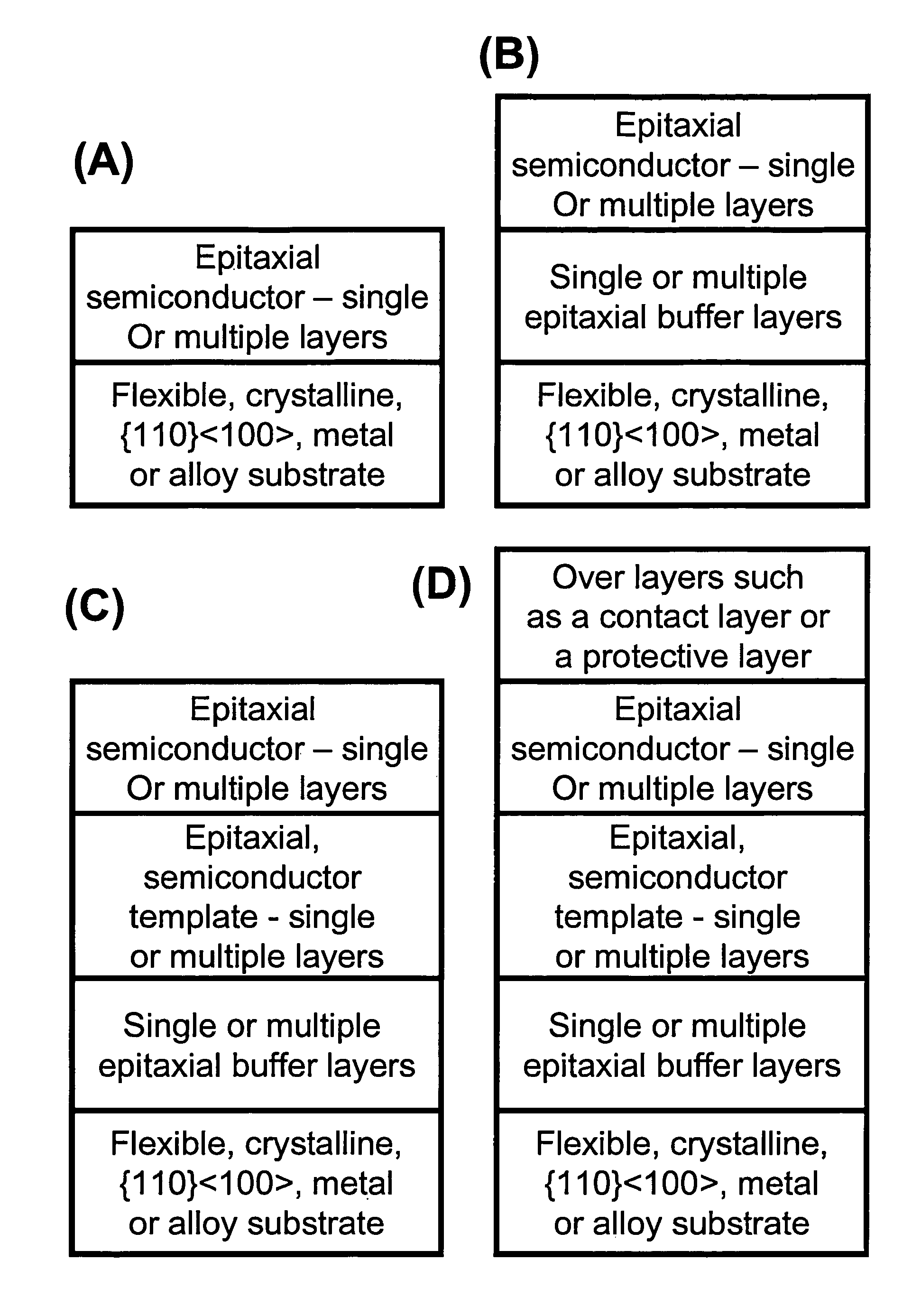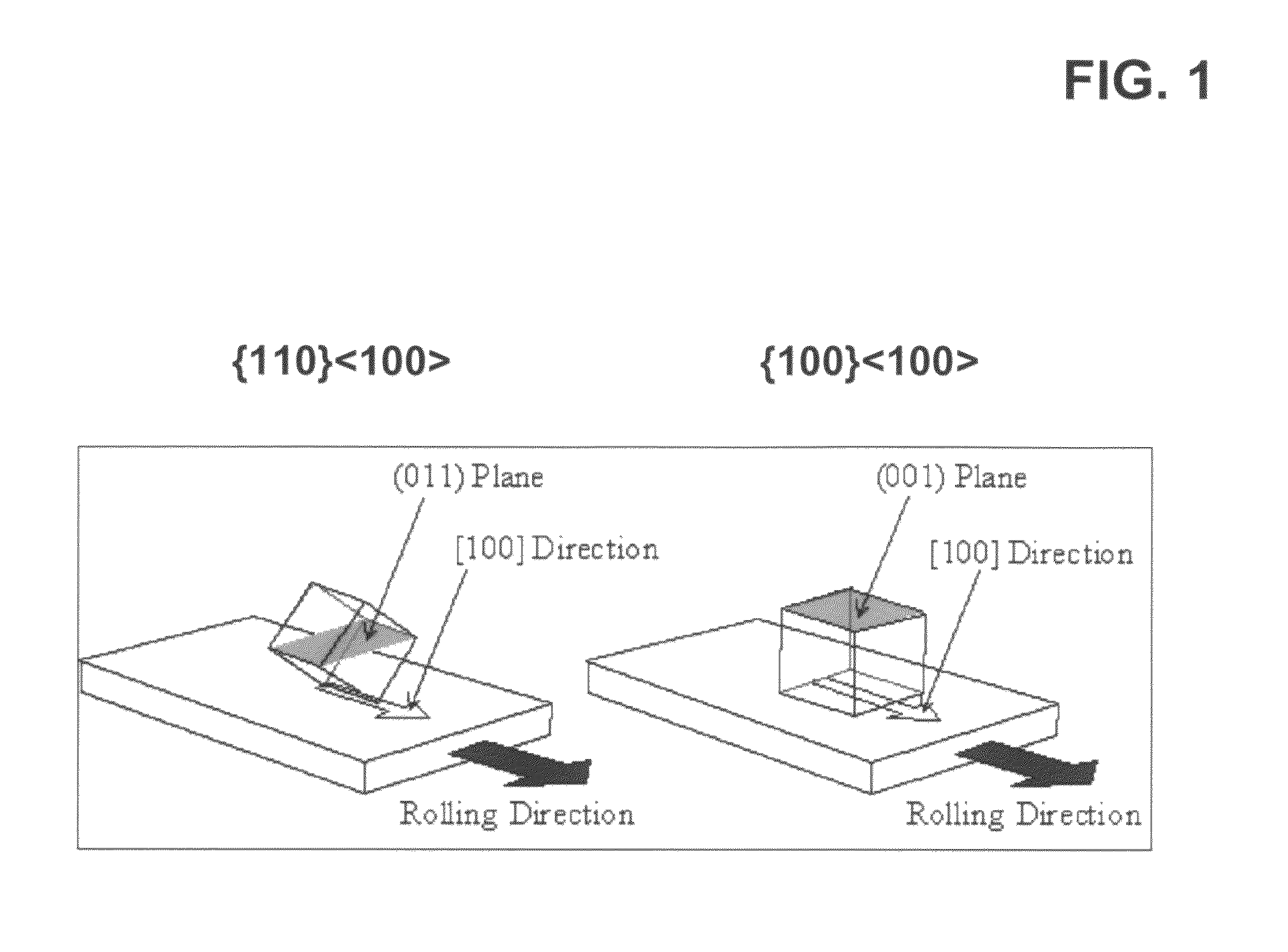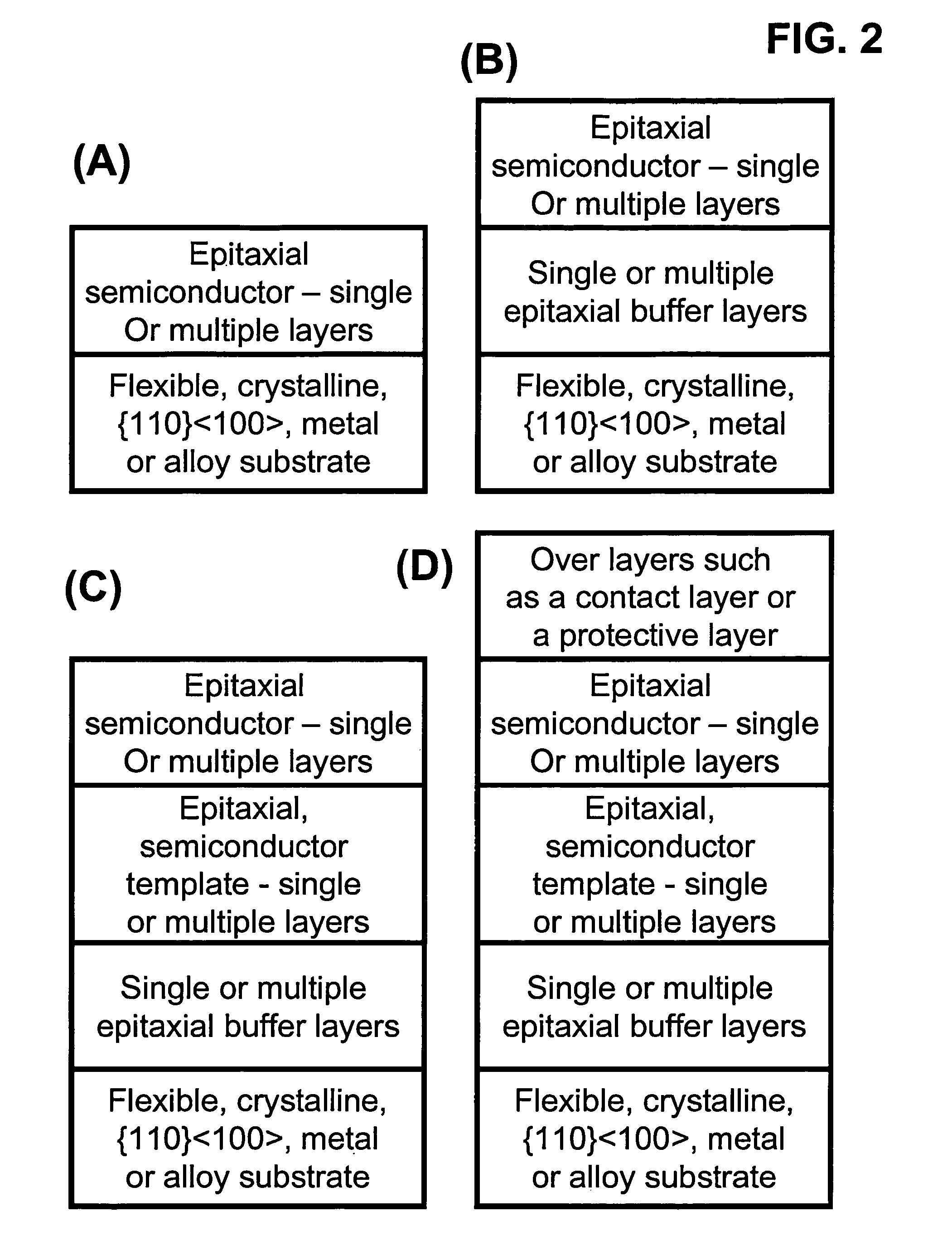Semiconductor-based, large-area, flexible, electronic devices on {110}<100> oriented substrates
a technology of semiconductors and substrates, applied in the direction of final product manufacturing, semiconductor/solid-state device details, sustainable manufacturing/processing, etc., can solve the problems of unrealized solar energy promise, prohibitively expensive cost of single crystal substrates, unfavorable price/performance metric, etc., and achieve high performance
- Summary
- Abstract
- Description
- Claims
- Application Information
AI Technical Summary
Benefits of technology
Problems solved by technology
Method used
Image
Examples
example 1
[0108]Starting with a secondary recrystallized, Fe-3 at % Si substrate, with a {110} orientation, a 10-75 nm thick, epitaxial layer of TiN is grown by electron beam evaporation, sputtering, pulsed laser ablation or chemical vapor deposition at a substrate temperature in the range of 300-850° C. This is followed by deposition of an epitaxial Si layer using chemical vapor deposition in the temperature range of 300-900° C.
example 2
[0109]Starting with a secondary recrystallized, Fe-3 at % Si substrate, with a {110} orientation, a 10-75 nm thick, epitaxial layer of TiN is grown by electron beam evaporation, sputtering, pulsed laser ablation or chemical vapor deposition at a substrate temperature in the range of 300-850° C. This is followed by deposition of a 10-75 nm thick, epitaxial, layer of MgO by electron beam evaporation, sputtering, pulsed laser ablation or chemical vapor deposition at a substrate temperature in the range of 300-850° C. This is followed by deposition of an epitaxial Si layer using chemical vapor deposition in the temperature range of 300-900° C.
example 3
[0110]Starting with a secondary recrystallized, Fe-3 at % Si substrate, with a {110} orientation, a 10-75 nm thick, epitaxial layer of γ-Al2O3 is grown by electron beam evaporation, sputtering, pulsed laser ablation or chemical vapor deposition at a substrate temperature in the range of 300-850° C. This is followed by deposition of an epitaxial Si layer using chemical vapor deposition in the temperature range of 300-900° C. Numerous reports exist in the literature of epitaxial growth of Si on γ-Al2O3 (see for example, Liwen tan, Qiyuan Wang, Jun Wang, Yuanhuan Yu, Zhongli Liu and Lanying Lin, “Fabrication of novel double-hetero-epitaxial SOI structure Si / γ-Al2O3 / Si,” Journal of Crystal Growth, vol. 247, pp. 255-260, 2003; K. Sawada, M. Ishida, T. Nakamura and N. Ohtake, “Metalorganic molecular beam epitaxy of films on Si at low growth temperatures,” Appl. Phys. Lett., vol. 52, pp. 1672-1674, 1988; M. Shahjahan, Y. Koji, K. Sawada and M. Ishida, “Fabrication of resonance tunnel diode...
PUM
| Property | Measurement | Unit |
|---|---|---|
| grain size | aaaaa | aaaaa |
| rotation angle | aaaaa | aaaaa |
| diameter | aaaaa | aaaaa |
Abstract
Description
Claims
Application Information
 Login to View More
Login to View More - R&D
- Intellectual Property
- Life Sciences
- Materials
- Tech Scout
- Unparalleled Data Quality
- Higher Quality Content
- 60% Fewer Hallucinations
Browse by: Latest US Patents, China's latest patents, Technical Efficacy Thesaurus, Application Domain, Technology Topic, Popular Technical Reports.
© 2025 PatSnap. All rights reserved.Legal|Privacy policy|Modern Slavery Act Transparency Statement|Sitemap|About US| Contact US: help@patsnap.com



